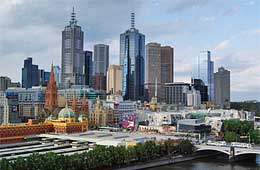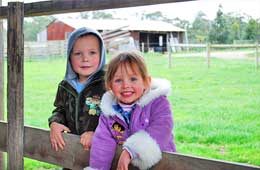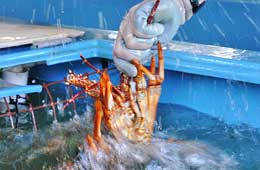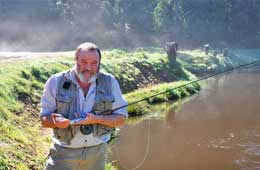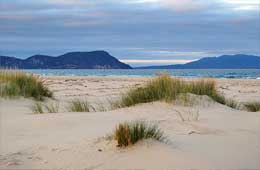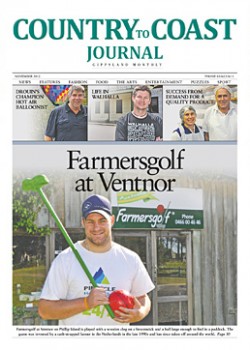The Gippslander newspaper
The small picturesque seaside town of Corinella was one of the first towns settled in Victoria in 1826. It was the site of Victoria’s first Government House and the first military government road.
Today it is a mecca for recreational fishing and other leisurely seaside activities, with beautiful views over Westernport Bay and French Island and all the necessary facilities to make it an enjoyable place to visit.
There are natural seaside walking trails with picnic areas where you’ll find rock pools, cliffs and wildlife and there’s a safe swimming beach.
The Corinella Jetty once used by commercial fishermen and for transporting goods to Melbourne by boat is now a popular place to meet and drop a line. The jetty has been nicely restored and an additional fishing platform with seating has recently been added to it.
At the end of the jetty, I encountered a group of jovial fishermen with broad smiles, fishing rods and empty buckets. When asked what they were hoping for Lew Potter and Dave Bateman from Woodleigh, Bill Lawrence from San Remo and Paul Kennedy from Nyora all said they were hoping for a good time. There was a chance they could catch elephant fish or gummy shark and in the spring they said they could catch snapper. It wasn’t long before two caught a good-sized trevally and an elephant fish.
Bryce Charles, a local boy from Corinella comes to fish from the jetty every day. Unlike the older fishermen, his bucket wasn’t empty. He had caught a ling fish, which he said was like an eel. “I caught an elephant yesterday and my Pop caught a trevally and two mullet this morning,” he said.
For anyone wishing to venture beyond the jetty and into the bay, Corinella has a dual-lane concrete boat ramp with full jetties along each side and boat hire.
Fresh water and fish cleaning facilities are provided and the launching ramp and car park are well-lit at night.
Above the boat ramp and overlooking the jetty, is a nicely kept recreational reserve with free, clean electric barbeques, picnic tables and a shaded rotunda lookout area.
Opposite the reserve on a hill, overlooking the bay is a caravan park that is managed and maintained by the Corinella Foreshore Committee and there are clean modern public toilets opposite the entrance.
The caravan park is the starting point for the walking trail that leads to the lookout at nearby settlement point where there are panoramic views of French Island, Phillip Island and San Remo.
Other accommodation in Corinella includes a guesthouse, holiday house and bed and breakfast.
Anything else you need you’ll find in the licenced Corinella General Store, which is not far from the foreshore. It has take-away food, fishing licences, bait and tackle, ice, fuel, auto marine oils and general supplies.
The French Island Ferry vehicle barge operates each day from the left of the jetty for passengers with or without their car wanting to visit French Island.
Just out of the town, not far off the Bass Highway is La Provincial restaurant, café and produce store. They serve fresh home-style Italian cuisine, local produce and local wine.
Kevin Hamilton and his mate Murray Argent, both now in their 80s, grew up in Corinella and remembered a time when boats were used for transport and commercial fishing and the Corinella jetty was a bustling place to be.
Kevin is a third generation resident and he and Murray attended the Corinella School together. Murray, one of six children, said he left school the day the Japanese attacked Pearl Harbour when he was 13 years old. Kevin, one of seven children, said he walked out of school the day he turned 14.
After leaving school, they both caught rabbits, dug chicory, farmed and they both went to Mildura for a while to pick fruit. Kevin said Chicory was used in coffee and it was once grown all over Corinella. There were three chicory kilns.
Murray became a farmer and a carpenter like his father and grandfather before him, and he said his father built a boat or two.
“He built one for Will Peters,” Kevin said. “He used to be the harbour master. He used to walk down the jetty the same time every evening with a lantern, climb a ladder and put it in a glass frame to show the red and green port and starboard lights to guide the boats to the end of the jetty. Sometimes he’d just about get up there and it would blow out, and he’d have to come down and light it again.”
Kevin, his father and grandfather were all farmers and commercial fishermen. “We caught mullet, whiting, pike, salmon, gummies and sometimes we put a long line out for snapper,” he said.
“We weren’t allowed to fish on Sunday so we ran out all the nets every weekend on the jetty to dry. The nets were cotton and we had to keep them tanned to preserve them. To make the tan we used to strip wattle trees, dry the bark out and when it was dry, we chipped it up and boiled it in a copper.”
The boats that they went out in were small and they only ever fished in Westernport Bay. The fish were loaded onto the train at Glen Forbes railway station to go to the fish market in Melbourne.
Kevin said when his grandfather was a fisherman, his uncle who did the mail run for years by boat, carted everybody’s fish across to Stony Point where it was loaded on a train to go to the Melbourne fish market. “He never missed a day and the boats only had sails in those days.”
He said in the 70s, the government bought all their fishing licences so there isn’t any commercial fishing at Corinella now but he still enjoys fishing. “I’ve got a little tinny that I go out in and I catch a few fish now and again.”
During his working life, Kevin also carted gravel, concrete and timber by boat to the prison farm on French Island where the prisoners unloaded it, and he carted sheep to Elizabeth Island, which isn’t far from Corinella.
“We used to load small trolleys with boxes in them that we pushed along a small railway line, and there was a crane out on the jetty to help load the boats,” he said.
Murray said his father and grandfather built the first house on the beach in Corinella and all the timber came by boat, but in 1910, the railway came from Nyora to Wonthaggi and then the timber came by rail.
He said also in 1910, the Wonthaggi Hospital was established. For a while it was a tent hospital and then in 1914, it became a permanent building. Before then all the midwives were on French Island and expectant mothers went across from Corinella by boat.
Murray’s mother taught at the Corinella School and Kevin’s mother came from French Island. “A lot of French Island people came to Corinella to live,” Kevin said.
“We all lived on fish, rabbits, cabbages and potatoes,” Murray said. “It was beautiful, and the old people knew how to cook them.”
“We used to walk out the gate and down to the beach in the evening,” Kevin said. “We could pick up as many garfish as we wanted, and then spear four or five flounder, and that’s what we’d have for breakfast.”
By Wendy Morriss
Copyright © 2012 Wendy Morriss: Freelance Journalist. All Rights Reserved.
